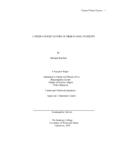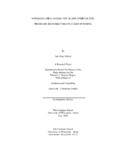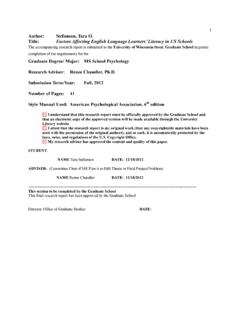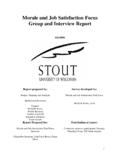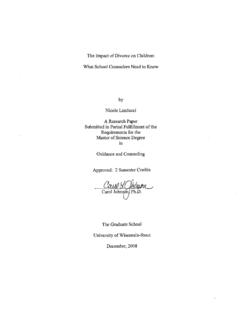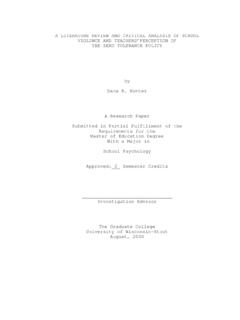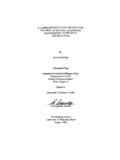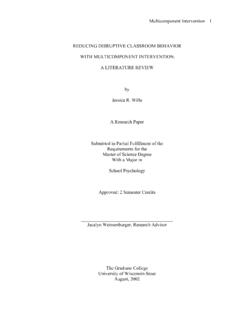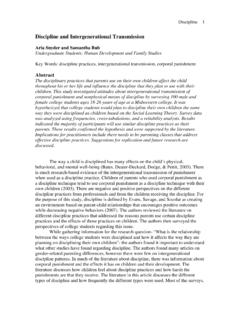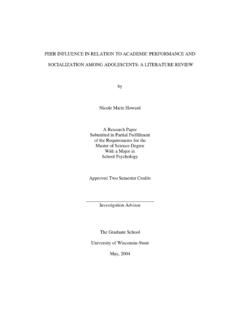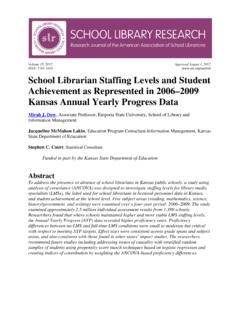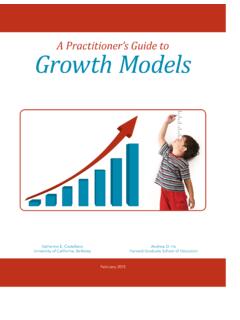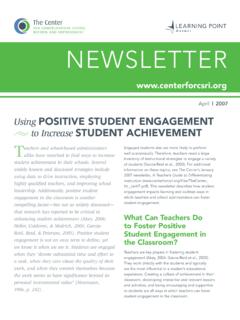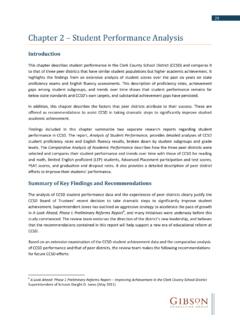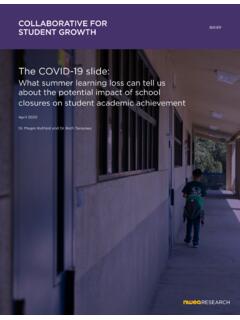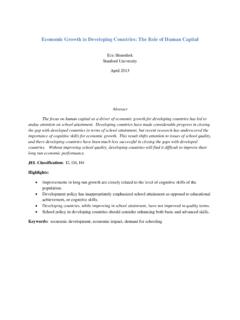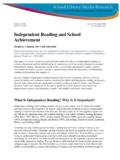Transcription of MEASURING THE ACADEMIC ACHIEVEMENT AND ENGLISH …
1 MEASURING THE ACADEMIC ACHIEVEMENT AND ENGLISH LANGUAGE PROFICIENCY OF students AT THE SECONDARY LEVEL BY Jessica R. Wille A Research Paper Submitted in Partial Fulfillment of the Requirements for the Degree of Education Specialist With a Major in School Psychology Approved: 6 Semester Credits Thesis Committee Members: The Graduate School University of Wisconsin - Stout May 2006 ENGLISH Language Proficiency 2 The Graduate School University of Wisconsin - Stout Menomonie, WI 5475 1 ABSTRACT Wille Jessica R (Writer) (Last Name) (First) (Initial) MEASURING the ACADEMIC ACHIEVEMENT and ENGLISH Language Proficiency of students at the (Title) Secondary Level School Psychology Jacalyn W.
2 Weissenburger, (May12006) 5 2 (Graduate Major) (Research Advisor) (MonthIYear) (No. of pages) American Psychological Association (APA) Publication Manual: Fifth Edition (Name of Style Manual Used in this Study) With the increase in ENGLISH language learner populations, the extent of ELL programming, and the need to increase retention, it is important to use appropriate assessment tools to determine the need for programming and to measure progress for ELL students . The purpose of this study was to determine the connection between ENGLISH language proficiency as measured by the Language Assessment Scales (LAS) and ACADEMIC success measured by grade point average and the Wisconsin Knowledge and Concepts Examination (WKCE).
3 Further, this research sought to determine the utility of the LAS for MEASURING growth over time. Participants (n = 29) were enrolled in a north central Wisconsin school district. Data was collected for 8th and 10" grade students during the 2002-2003 school year. Separate correlational analyses were computed to determine relations between language proficiency and WKCE and ENGLISH Language Proficiency 3 grade point average. Further, dependent t-test analyses were conducted to determine language proficiency growth. Findings reveal acceptable developmental validity on the LAS reading measures, while the writing measures failed to demonstrate acceptable alternate form reliability.
4 Results of language proficiency correlations with measures of GPA and performance on the WKCE revealed mixed results. The overall evidence did not confirm the usefulness of the LAS to predict student ACHIEVEMENT as measured by cumulative GPA or the WKCE's Reading and Language Arts standard scores. ENGLISH Language Proficiency 4 Table of Contents Pa .. Abstract 2 .. List of Tables 6 .. Acknowledgements 7 .. Chapter I: Introduction 8 .. Chapter 11: Literature Review -12 .. Second Language Acquisition 12 .. Definition of ENGLISH Language Learner 13 .. Identification Process for ENGLISH Language Learners 14 .. Assessment Tools for ELL students 15 .. Problems with Assessment 17.
5 Impacts of Policy and Reform Efforts 1'8 .. Programming for ENGLISH Language Learners 22 .. Chapter 111: Methodology 28 .. Participants 28 .. Data Collection 29 .. Instrumentation -29 .. Data Analysis -32 .. Chapter IV: Results 33 .. Preliminary Analyses 33 .. Research Question One -33 ENGLISH Language Proficiency 5 .. Research Question Two -34 .. Research Question Three 35 .. Chapter V: Summary and Discussion 36 .. Research Question One -36 Research Question Two .. 37 Research Question Three .. 38 .. Limitations 38 Implications and Recommendations for Practice .. 39 .. Summary 39 .. References 47 ENGLISH Language Proficiency 6 List of Tables Table &.
6 1 Sample Characteristics and Participant Population 41 .. 2 Correlation between LAS Standard Scores of Form A and Form B 42 .. 3 Correlation between LAS Raw Scores of Form A and Form B 43 .. 4 . Intercorrelations Between Subscales of LAS Standard Scores and GPA 44 5 . Intercorrelations Between LAS Raw and Standard scores and WKCE subscales .. 45 .. 6 Growth Over Time: Dependent t-test Analyses 46 ENGLISH Language Proficiency 7 Acknowledgments I wish to thank Dr. Jacalyn W. Weissenburger, my research advisor, for her invaluable support, encouragement, and contributions throughout the project. Dr. Weissenburger helped design the study, assisted in the logistics of data collection, and aided in the revision of this paper.
7 She also assisted in connecting me with the participating school district. I also wish to thank Dr. Fred Weissenburger, Executive Director of Student Services and Dr. Anthony Beardsley, Director of Pupil Services for the Eau Claire Area School District, who permitted use of the school district's data for the purposes of the study. I am also thankful for Christine Ness, UW-Stout, for her help with the data input and data analyses. Additionally, I thank Fafani Bents, school psychology graduate student, and Pat Fuhrmann, Pupil Services Secretary, for their assistance in the data collection. Finally, I thank my thesis committee for their support and guidance.
8 Committee members were Dr. Amy Gillett and Kelly Larnon. ENGLISH Language Proficiency 8 Chapter I Introduction The ENGLISH Language Learner (ELL) population in the United States grew 46% in 10 years for students aged 5- 17 (National Clearinghouse for ENGLISH Language Acquisition and Language Instruction Educational Programs, 2002a). In many states, the data reveal a staggering explosion of students who do not speak ENGLISH as their first language. States such as Minnesota, Nebraska, and Nevada have seen over a 200% growth in their ELL populations since the 1990 Census. Other states (such as Wisconsin, Missouri, Colorado, and Florida) have experienced a one hundred percent increase in their ELL population since 1990.
9 The current number of ELL students in the United States is reported at approximately 5 million, and these numbers are expected to rise in the upcoming years (National Clearinghouse for ENGLISH Language Acquisition & Language Instruction Educational Programs, 2002b). In fact, by 2030, the ELL population is expected to account for approximately 40% of the school-aged children in the United States (Roseberry-McKibbin & Brice, 2000). Given the overwhelming influx of students who do not natively speak ENGLISH , the federal and state governments are left to determine how best to serve these children and their families. An important educational issue is how to meet the needs of ELL students in the classroom.
10 The mounting numbers of ELL students present a growing challenge for national, state, and local educational agencies. Examining the policies and procedures regarding the instruction of students who come from non- ENGLISH speaking backgrounds has become imperative. Reforms in the education of ELL students are based on research, case law, and legislation. Such reforms ENGLISH Language Proficiency 9 outline how these students are to be educated and assessed. Further, standards have been set as to how school districts are to be held accountable for results. Research indicates that it takes 4 to 12 years of second language development for the most advantaged students to reach a level of ACADEMIC proficiency in which they can compete with native speakers (Collier, 1995).
